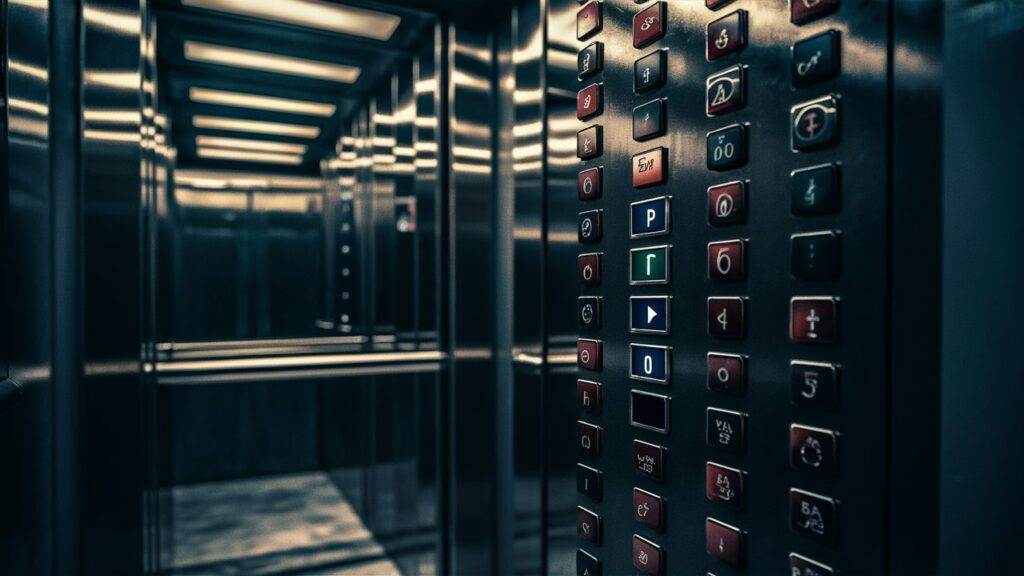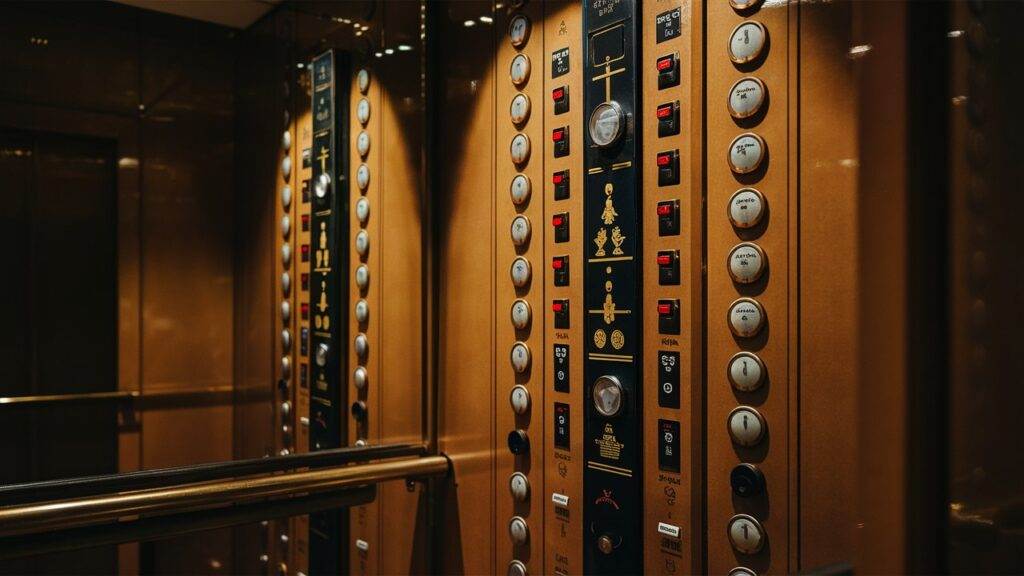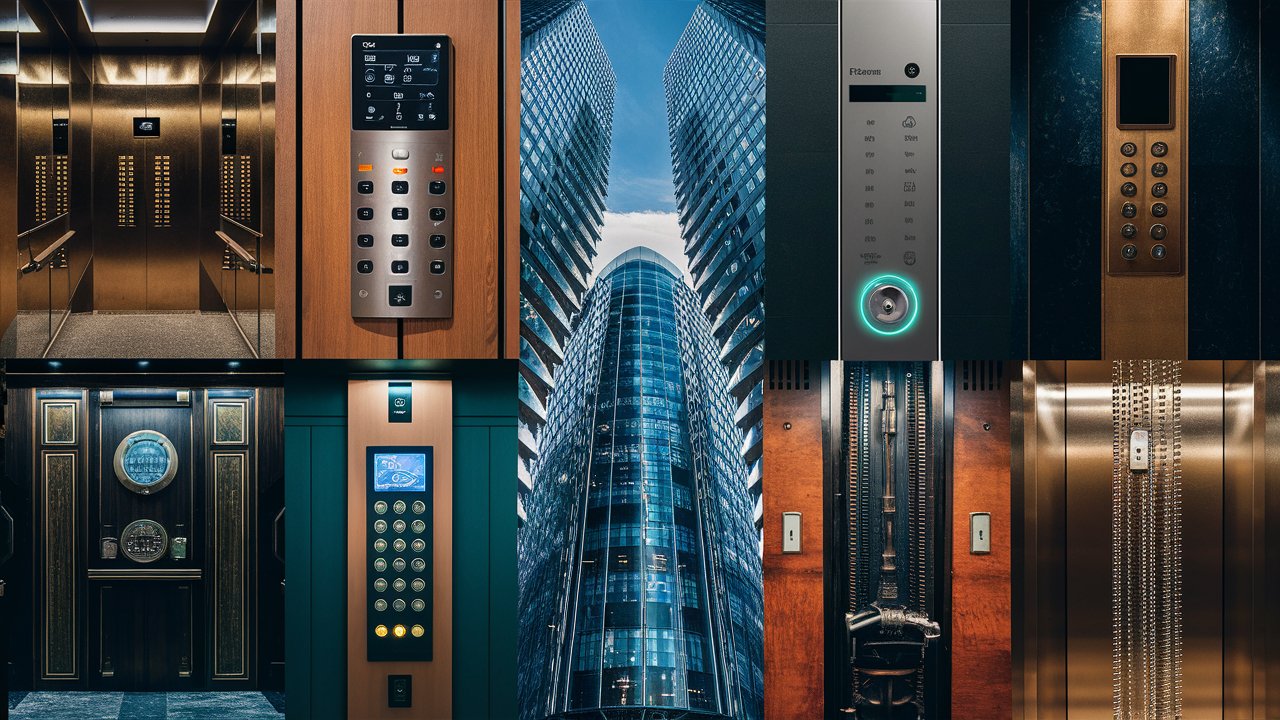Understand the various types of elevator control systems, their operations, and codes. This guide covers everything from elevator controllers to elevator operations for a complete safety overview.
The Main Types of Elevator Control Systems
Understanding Elevator Controllers
An elevator controller is super important for how elevators work. Think of it as the brain of the whole system, making sure everything runs smoothly and safely as people move between floors. Usually found in the machine room or control panel, this controller connects with different parts to follow commands based on what users want and how the elevator needs to operate.
The main parts of an elevator controller include:
- Input Devices: These are things like hall call buttons and sensors that figure out where the elevator is and how much weight it has.
- Output Devices: These consist of motors and brakes that carry out the orders from the controller.
Getting a grip on these components helps us understand how elevators function effectively.
The 4 Main Types of Elevator & Lift Controls
Elevator control systems can be divided into four key types:
- Selective Collective Operation: Here, passengers pick their floor before getting in. The controller then decides the best stops based on who’s going where, which makes it more efficient.
- Constant Pressure: In this setup, passengers have to keep pressing a button for the elevator to go. It’s simple but might not be great for places with a lot of traffic.
- Nonselective Collective: This type lets passengers hit any floor button once they’re inside. The elevator will stop at each chosen floor one after another, which can take longer.
- Single Automatic: This system takes passengers directly to their requested floors without needing them to select anything first or keep pressing buttons.
Each type has its perks and works better in different buildings depending on how busy they are.
Operations and Safety Standards
Elevator control systems need to follow strict safety rules set by groups like ASME A17.1 in North America or EN 81 in Europe. These guidelines cover everything from how elevators should be installed to regular maintenance routines that keep everyone safe.
Key operations of an elevator control system include:
- Monitoring passenger requests
- Managing door functions
- Controlling how fast the elevator speeds up or slows down
- Handling emergencies during power cuts or other failures
Following these rules is not just about safety; it also keeps building managers compliant with legal requirements. Regular checks make sure all parts work well within these standards.
Next Steps
If you’re thinking about upgrading your current elevators or installing new ones, reaching out to a professional can help you find solutions that fit your needs while staying safe according to all relevant codes.
Detailed Functions of Elevator Controllers
Elevator controllers play a key role in how elevators work. They handle the control logic and decision-making that decide how an elevator reacts to what users want. This means they take signals from things like hall call buttons and passenger weight sensors. The quicker a controller can make decisions, the smoother the ride and shorter the wait time.
Elevator Controller Functions
Elevator controller functions cover several important areas:
- Control Logic and Decision Making: The controller figures out what users want, prioritizes requests, and finds the best route for the elevator. It uses real-time data to keep wait times low.
- Safety Features and Emergency Protocols: Safety is really important in elevators. Controllers have emergency protocols that activate brakes if there’s a power failure or if someone gets stuck. They react fast to alarms triggered by sensors, keeping passengers safe.
- Energy Efficiency and Performance Optimization: Modern elevator controllers help save energy by looking at traffic patterns. They use algorithms to guess when usage will be high, allowing them to adjust performance accordingly.
Common Applications
Elevator controllers are used in many places:
- Commercial Buildings: In tall office buildings, advanced systems manage several elevators at once, cutting down wait times and boosting efficiency.
- Residential Complexes: In apartment buildings, straightforward controllers ensure residents can easily access their floors while keeping safety in check.
- Industrial Facilities: Elevators in warehouses need strong controls that can handle heavy loads often. These systems focus on reliability and performance even under tough conditions.
Picking the right elevator control system is key for making sure operations run smoothly based on each building’s needs.
Understanding how elevator controllers work is essential for enhancing both operational efficiency and passenger safety in various settings where elevators are used.
Components of the Elevator Controller
Essential Parts and Their Roles
The elevator controller is made up of several important components, each playing a key role in ensuring the elevator runs safely and efficiently.
- Microprocessor Unit: This unit is the brain of the elevator control system. It processes input from various sensors, like load weight and cabin position, making decisions based on programmed logic. This part is crucial for controlling how the elevator moves.
- Power Supply and Backup Systems: The power supply keeps the elevator running smoothly. It includes backup systems that ensure operation during power outages, which is essential for passenger safety.
- Sensory and Feedback Mechanisms: These mechanisms keep track of how the elevator operates. They provide real-time data on load weight, cabin position, and door status. This information helps make informed decisions about operations.
- Communication Systems: These systems allow different parts of the elevator to interact with each other. They ensure that all components work together effectively by sharing information.
Basic Elevator Components
Understanding basic components helps clarify how elevators function.
- Cabin and Shaft: The cabin is where passengers ride, while the shaft serves as a vertical path for movement. Together, they form the structure through which people travel.
- Door Systems: Door systems are vital for safety. They prevent accidents by ensuring doors do not open when the elevator is moving, protecting passengers from potential dangers.
- Control Panel and Interface: The control panel allows users to select floors or activate emergency functions. A user-friendly interface makes it easier for everyone to use.
- Counterweights and Pulleys: Counterweights balance the cabin’s load, improving energy efficiency during operation. Pulleys help move both the cabin and counterweights smoothly along their paths.
Advanced Technologies in Elevator Controllers
Elevator technology keeps advancing to enhance efficiency and safety.
- Smart Elevator Systems: Smart elevators use advanced algorithms to optimize travel times based on passenger demand. This technology reduces wait times and improves overall efficiency.
- Internet of Things (IoT) Integration: IoT integration allows for remote monitoring and control via internet connectivity. Maintenance teams can address issues before they become serious problems through this capability.
- Predictive Maintenance Technology: Predictive maintenance uses data analytics to identify potential failures before they happen. By analyzing performance data, this technology reduces downtime and increases safety within elevator systems.

Classification of Elevator Control Systems
Different Types of Elevator Control Systems
Manual Control Systems
Manual control systems rely on direct input from users. Operators utilize buttons or levers to move the elevator. These systems are often found in smaller buildings where foot traffic is lower. Key controls include floor selection buttons and emergency stop features. While manual systems are simple, they require constant attention from operators, making them ideal for specific situations like service elevators in low-rise buildings.
Automatic Control Systems
Automatic control systems improve efficiency and user experience significantly. Passengers can select their desired floors with just a push of a button. Two main types include selective collective operation and nonselective collective operation. In selective collective operation, the elevator stops only at requested floors, which speeds up travel during busy times. Nonselective collective systems stop at every floor in one direction before returning, making them effective in buildings with evenly distributed traffic. Group Control Systems Group control systems manage multiple elevators at once to enhance service efficiency. They use traffic management algorithms to predict demand and assign elevators accordingly during peak hours. By analyzing passenger movement patterns, group control can cut down wait times and boost overall building performance. This technology integrates various elevator system components to ensure smooth operations.
Computerized Control Systems
Computerized control systems take advantage of advanced technologies like programmable logic controllers (PLC). These systems allow for real-time monitoring and adjustments based on usage trends. Smart elevator technology incorporates IoT capabilities for predictive maintenance and better energy efficiency. Computerized controls streamline operations while providing data analytics for ongoing performance improvements.
Emerging Trends in Elevator Controls
AI-Powered Elevators
AI-powered elevators mark a significant step forward in elevator technology. They use artificial intelligence for predictive maintenance, spotting potential issues before they escalate into major problems. This feature enhances passenger safety by ensuring that elevators function smoothly without unexpected breakdowns. Additionally, AI analyzes passenger behavior to optimize wait times and improve the overall experience.
Eco-Friendly Systems
Sustainability is becoming increasingly vital in modern elevator design. Eco-friendly systems focus on cutting down energy consumption through innovative technologies such as regenerative drives that capture energy during descent and send it back into the building’s power system. Sustainable designs also use materials that minimize environmental impact while maintaining high performance standards.
Touchless Control Interfaces
The rise of touchless control interfaces has gained traction due to health concerns related to the COVID-19 pandemic. These interfaces let users operate elevators without physical contact, enhancing hygiene in public spaces. Technologies like motion sensors or smartphone applications facilitate this interaction, making it safer for passengers while modernizing user experiences.

Diagnostic Tools and Maintenance
Common Diagnostic Tools Used
To keep elevator control systems running smoothly, it’s crucial to use various diagnostic tools. Diagnostic panels give real-time updates on how the elevator is functioning. They show error codes and alerts that help technicians spot problems quickly, which is key for safety and efficiency.
Remote monitoring systems provide ongoing oversight of elevator performance from afar. This means issues can be addressed before they turn into major breakdowns, reducing unexpected downtime.
Routine inspections are also essential for maintaining safety standards. By using routine inspection checklists, maintenance teams can thoroughly evaluate all parts of the elevator system. This ensures compliance with safety regulations and helps catch potential failures early, which enhances passenger safety.
Preventative Maintenance Strategies
Preventative maintenance plays a big role in prolonging the life of elevators and ensuring their dependability. Having scheduled maintenance plans allows for regular checks on critical components like brakes, sensors, and control systems. These plans should be customized based on how often the elevators are used in commercial or residential buildings.
Tackling common issues before they escalate can save time and money on repairs. Simple fixes such as recalibrating sensors or swapping out worn door mechanisms can prevent bigger problems later on. Hiring professional maintenance services guarantees that certified technicians handle all tasks, ensuring everything runs as it should.
Real-Life Implications
Looking at real-life examples through case studies sheds light on potential challenges in elevator operations. For instance, reviewing past incidents where elevators failed due to poor diagnostics underscores the need for regular checks and updates to control systems.
Industry experts highlight that investing in advanced diagnostic tools reduces failures over time. As one expert noted: “A well-maintained elevator not only improves user experience but also cuts down operational costs.” This insight emphasizes why focusing on diagnostics and maintenance is essential for building managers or owners seeking reliability and efficiency in their elevators.
Future of Elevator Control Systems
The future of elevator control systems is exciting and full of potential. With rapid advancements in technology and changes in safety regulations, these systems are evolving to meet modern demands.
Recent Advancements and Updates
Recent updates in elevator technology focus on enhancing safety and efficiency. New safety regulations are being developed to protect passengers while improving operational performance. Innovations like smart sensors are becoming essential, allowing for better monitoring and predictive maintenance technologies. These advancements not only enhance the functionality of elevator controllers but also contribute to energy-saving measures that benefit both commercial and residential buildings.
Predictions and Future Developments
Looking ahead, AI-powered elevators are set to change the industry dramatically. These systems will optimize traffic management by analyzing real-time data to predict passenger demand, adjusting operations as needed. Sustainable designs will also gain traction as environmental concerns rise, leading to more energy-efficient solutions. Additionally, touchless control interfaces will become increasingly popular due to their convenience and hygiene benefits in public spaces.
Elevator Control System Guide for Property Managers
For property managers dealing with elevator control systems, choosing the right system is essential. Factors like building size, expected traffic flow, and specific operational needs should guide this decision-making process. Implementation involves integrating various components such as input devices (like hall call buttons) with output devices (like direction indicators) into a cohesive system.
Ensuring compliance with safety codes is non-negotiable; regular inspections and maintenance strategies must be established to guarantee all components function correctly over time. Understanding different types of elevator operations can also help property managers make informed choices about their systems.
Inquire for More Info
If you have questions or need further information about modernizing your elevator control systems or implementing new technologies, feel free to reach out!

